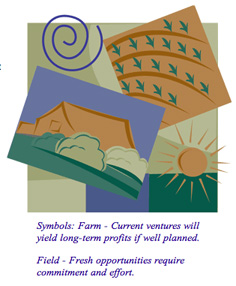This issue of Changing Times was originally published just days after the tragic events of 9/11. I have left the original introduction untouched as it was a poignant reminder of the agony most of us felt in the wake of those events…
introduction untouched as it was a poignant reminder of the agony most of us felt in the wake of those events…
A Letter from Karen
This issue was ready to go to press when the tragedies of September 11, 2001, consumed our lives and changed us forever. To any of you, whose families and friends are affected by those events, our prayers and thoughts are with you daily.
Like many of you, I have worked to put one foot in front of the other, and to “go back to our normal lives.” What we struggle to remind ourselves is that our heightened sense of evil doesn’t negate the goodness on which we build our daily existence. We lean on hope to get us through each day.
In the last edition of this newsletter, we focused on how clearly identifying values and purpose can propel your company forward. In this edition, we focus on your trajectory – charting the best course for that forward momentum. It is truly difficult to focus on the future in these uncertain times. And, it may be more critical now than ever. It is how you can restore hope to your organization.
- Defining a Vision – Overview
- A Visioning Process
- Using Future Search to Define Common Ground
Who Needs a Vision?
“If you don’t know where you are going, you might end up somewhere else.”
What a common sense notion—how frequently do you find yourself or your organization headed in a clear direction?
Experience shows the powerful effect of defining a clear and ambitious desired future. One client we work with recently initiated a round of strategic planning. We began by going back to a simple one-afternoon vision and goal-setting session we had held three years ago. To everyone’s surprise and satisfaction, the company had achieved their “vision” sales target for 2002 two years ahead of schedule! And, when that target was first stated, it was clearly ambitious beyond the team’s wildest imagination. That success has propelled the company to set a new vision for quintupling those sales!
A vision is a short, clear statement of what you want to be true for you or your organization at a specifically stated point in time.
From our view, the benefit of visioning can be comprehensive. Personal planning is a tremendously useful endeavor. Work teams, departments, organizations and entire companies have all engaged in successful visioning work.
How Do We Make Sure Our Visioning is Meaningful?
We have found several attributes that distinguish successful visioning efforts from those that are limited to being “words on a wall:”
Be inclusive/involve lots of people. We know folks support what they help create. This clearly applies to defining an ambitious future.
Work deliberately. This work needs to move ahead relentlessly forward AND at a pace that the work groups can keep up with.
Envision thoughtfully. When designing vision processes, we frequently allow for “percolation time.” When vision work groups have overnights to consider their work, and breaks in the process for individual reflection, they frequently come back from those introspections with breakthroughs in their thinking. This is by nature both a public discursive process and a private introspective process. Successful processes allow for both kinds of work.
“It’s the Process, Stupid!”
You won’t be surprised to hear this from us, because our observation is that the work of thinking about the future is as valuable as the final deliverable. We believe that is why folks who look back on their visioning work are frequently surprised at how very successful they have been even though they did not experience themselves as focused on the vision’s achievement. We believe that the visioning process plants seeds that grow and flourish in your organization’s work, often subconsciously. This phenomenon reinforces the need for your process to be inclusive.
Prime the Pump
As your workgroup defines its future, be sure to allow time and space early on for external scanning. Groups who steep themselves in emerging trends, best practices and big ideas from other companies and industries can develop their visions with confidence. External benchmarking and industry analysis enable you to set your vision on a solid understanding of the environment in which your organization exists.
“Just Do It.”
Whatever you do, begin soon. Setting a vision is a process you learn by doing. And, the more you do it, the better your visioning skills become. So, jump in – the current is strong, the thrills are great and the rewards are immeasurable.
Getting Started
The following is a simple exercise we frequently use to help begin the visioning process. We follow Stephen Covey’s “habit” of Beginning with the End in Mind. We find that visioning work can be made both tangible and compelling to workgroups.
A Visioning Exercise
Purpose: To imagine fully the compelling future towards which you want to work.
It is January, 200x (you select the appropriate time horizon for the organization) and you have just learned that your organization will be featured in Fortune (or your industry’s most highly regarded magazine’s next issue). In addition to a cover photo, the magazine will include a full feature on your organization. Your organization’s outstanding success over the last five years is the driving force behind your selection for the cover story.
1. What/who is on the cover of the magazine? Draw it on a flip chart.
2. What is the title of the article?
3. Write an outline of the article. Be sure to include quotes from customers, professional staff and employees, industry experts, and competitors. Describe the factors that have contributed to your outstanding success. Note the barriers that had to be overcome. How did you do it?
Your article should describe feasible events that people are capable of doing. It needs to be a scenario in which you believe, and for which you would work. Do not let concerns regarding cost or difficulty limit your description of your desired future. This activity is designed to help you identify what you want. Another step in the process is to match what you want against your resource limitations.
Groups Use Future Search Process to Define Common Ground
So, you are convinced your department or organization should have a clear direction towards which it is moving. How do you do that? There are a number of effective ways to define a vision. One that we have found to be particularly effective is called Future Search.
Future Search is built on the notion that the people in a given organization or system know best how to define the desired future. And, the more of them who are included in the vision process the better. The Future Search process begins with an assessment of the past; frequently employing 30-foot timelines on butcher paper to create a collective view of the journey thus far. Then, the process is enriched with the insertion of external trends and developments that can and will affect the organization’s future. The process then moves forward to creating a “map” of the current reality. This map organizes the trends and factors that the group names as important, and in the process moves from their individual listing of “my issues” to a collective view of “our issues”. The mapping process is one of the most powerful aspects of the Future Search process because it enables the group to build a picture of what is often a complex and changing environment. For many groups, just creating the map helps them embrace and understand their future direction.
Once the map is created the group works to analyze it, defining the most critical forces going forward. Then future search leads the group to an assessment of today’s organization, the group is now ready to imagine and write about the future. Participants are encouraged to build a picture of their reality. In the words of Jack Welch, the group defines “reality as it is, not as you wish it was.” Armed with this view of the desired envisioned future that is specific, and is portrayed as if it had already happened, individuals then work with each other to identify common elements in their visions, and with the assistance of the facilitator, recombine individual work into a collective draft of the future vision. That draft is then brought forward to larger groups of the organization for validation and refinement.
Future Search enables groups to articulate their future by providing experiential structures, and creating a high energy, focused environment for defining common ground. We recommend it highly!
From our Bookshelf
There are a number of excellent books and articles on the power of visioning. Here is a short list of our favorites:
Built to Last, Collins and Porras.
How to Get Control of your Time and Your Life, Alan Lakein.
Future Search: An Action Guide to Finding Common Ground for Action in Organizations and Communities, Sandra Janoff, Marvin Ross Weisbord.
Whistle While You Work; Heeding Your Life’s Calling, Richard J. Leider and Daivd A. Shaperio.
The Fifth Discipline Fieldbook: Strategies and Tools for Building a Learning Organization, Peter M. Senge (Editor), Art Kleiner (Editor), Charlotte Roberts, Rick Ross, Bryan Smith.
If You Don’t Know Where You’re Going, You’ll Probably End Up Somewhere Else, David Campbell.


Leave a Reply